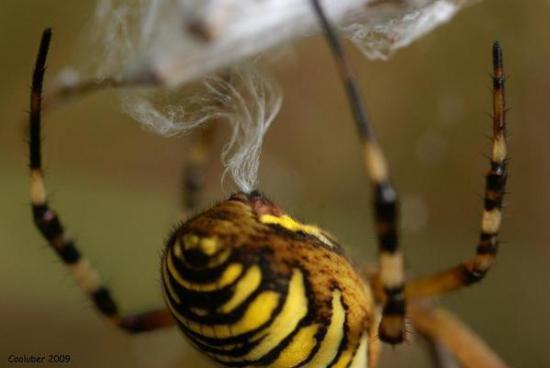Team:Bordeaux/Parts
From 2014.igem.org
(Prototype team page) |
m |
||
| (37 intermediate revisions not shown) | |||
| Line 1: | Line 1: | ||
| - | {{ | + | {{:Team:Bordeaux/Tete}} |
| + | We decided to provide the registry with just a few parts but as documented as possible (in terms either of experiment or design and literature). These parts encode proteins based on consensus sequences of natural proteins. They are synthetic proteins (not existing in nature), used in a context of "white biotechnology" as biomaterials with specific properties unravelled from the nature. | ||
| - | < | + | ---- |
| - | < | + | [[File:Bdx2014 resilin 2.jpg|center|300px]]<br> |
| - | + | [https://2014.igem.org/Team:Bordeaux/Parts/BBa_K1317001 BBa_K1317001]<br> | |
| - | </ | + | This part is the coding sequence for the resilin like polypeptide. This sequence was assembled from a consensus of the proresilin exon 1 from Drosophila melanogaster. This protein, in insects, allows resistance and elasticity used for jumping, flapping... The synthetic gene encodes a synthetic protein "resilin-like". The repeated aminoacids allow to retrieve these properties of resistance, resilience and elasticity, but with a minimal pattern of the original protein, which is more suited for downstream applications. It can be used to produce wire presenting these properties after wet-spinning.<br><br> |
| - | < | + | ---- |
| - | < | + | [[File:Bdx2014 spider.jpg|center|300px]]<br> |
| + | [https://2014.igem.org/Team:Bordeaux/Parts/BBa_K1317002 BBa_K1317002]<br> | ||
| + | This part is the coding sequence for the silk like polypeptide. This sequence was assembled from a consensus of the MaSp1 from spiders. This protein, in spiders, allows resistance and elasticity used for spinning the webs. The synthetic gene encodes a synthetic protein "silk-like". The repeated aminoacids allow to retrieve these properties of resistance, resilience and elasticity, but with a minimal pattern of the original protein, which is more suited for downstream applications. It can be used to produce wire presenting these properties after wet-spinning.<br> <br> | ||
| + | ---- | ||
| + | [[File:Bdx2014 elastin.jpg|center|300px]]<br> | ||
| + | [https://2014.igem.org/Team:Bordeaux/Parts/BBa_K1317003 BBa_K1317003]<br> | ||
| + | This part is made with a consensus of the natural elastin sequence. Elastin is a protein involved in maintaining shape and elasticity of several tissues like skin. It has a high elasticity and resilience as a polymer. | ||
| + | In our project, the consensus sequence allows the use of a minimal pattern of the protein while keeping these particular properties. In an iGEM spirit the consensus itself can be used as a brick to vary length and nature of the polymers with our other biobricks (BBa_K1317001, BBa_K1317002). | ||
| + | The basic length of a polymer is 20 monomers. The coding sequence can be repeated easily using our improvement of the biobrick assembly system to get rid of the Stop Codon. After variation of the length different properties are attributed to the part. For example it can be used as a fusion tag to purify easily any fuse protein thanks to the thermal cycling purification. | ||
| + | ELP indeed have this particularity to solubilize at lower temperature. If it is used in a protein mixture (a lysate for example) after a few cycles of thermal cycling (from 4°C to 50°C), the pure fuse protein is obtained. | ||
| + | This part can be used as a purification tag for easy, quick and column-free purification or as coding sequence for a polymer usable to get fiber with good elasticity and resilience. The polymer is biocompatible, biodegradable and could be used as a tool for surgery or other health applications.<br><br> | ||
| + | <b>The part provided to the registry encodes for ELP20. Throughout all the experiments, if two copies are used it will be ELP40, and if three copies are used it will be ELP60.</b> <br> <br> | ||
| + | ---- | ||
| - | + | [https://2014.igem.org/Team:Bordeaux/Parts/BBa_K1317004 BBa_K1317004]<br> | |
| - | + | The ELP presents specific properties: it precipitates at high temperature. This property can be used for thermal cycling purification for instance. By successive cycles of temperature, ELP can be purified from a mix of proteins. This special property has been used to create a composite part for the iGEM registry. It is a proof of concept of the use of this part as a tool for protein purification by fusing ELP to another protein. The protein used as an example is RFP, to ease vizualisation of the process.<br> <br> | |
| - | + | ||
| - | + | ||
| - | + | ||
| - | + | ||
| - | + | ||
| - | + | ||
| - | < | + | |
| - | + | ||
| - | + | [https://2014.igem.org/Team:Bordeaux/Parts/Assembly_improvement Improvement of the Biobrick standard assembly]<br> | |
| - | < | + | In order to get rid of the stop codon in a coding sequence, to fuse properly proteins, we proposed an improvement of the assembly system by using the restriction site NheI.<br> |
| - | < | + | |
| - | + | {{:Team:Bordeaux/Pied}} | |
| - | + | ||
| - | + | ||
| - | + | ||
| - | + | ||
| - | + | ||
| - | + | ||
| - | + | ||
| - | + | ||
| - | + | ||
| - | + | ||
| - | + | ||
| - | + | ||
| - | + | ||
| - | + | ||
| - | + | ||
| - | + | ||
| - | + | ||
| - | + | ||
| - | + | ||
| - | + | ||
| - | + | ||
| - | + | ||
| - | + | ||
| - | + | ||
| - | + | ||
| - | + | ||
| - | + | ||
| - | + | ||
| - | + | ||
| - | + | ||
| - | + | ||
| - | + | ||
| - | + | ||
| - | + | ||
| - | + | ||
| - | + | ||
| - | + | ||
| - | + | ||
| - | + | ||
| - | + | ||
| - | + | ||
| - | + | ||
| - | + | ||
| - | + | ||
| - | + | ||
| - | + | ||
| - | + | ||
| - | + | ||
| - | + | ||
| - | + | ||
| - | + | ||
| - | + | ||
| - | + | ||
| - | + | ||
| - | + | ||
| - | + | ||
| - | + | ||
| - | + | ||
| - | + | ||
| - | + | ||
| - | + | ||
| - | + | ||
| - | + | ||
| - | + | ||
| - | + | ||
| - | + | ||
| - | + | ||
| - | + | ||
| - | + | ||
| - | + | ||
| - | + | ||
| - | + | ||
| - | + | ||
| - | + | ||
| - | + | ||
| - | + | ||
| - | + | ||
| - | + | ||
| - | + | ||
| - | + | ||
| - | + | ||
| - | + | ||
| - | + | ||
| - | + | ||
| - | + | ||
| - | + | ||
| - | + | ||
| - | + | ||
| - | + | ||
| - | + | ||
| - | + | ||
| - | + | ||
| - | + | ||
| - | + | ||
| - | + | ||
| - | + | ||
| - | + | ||
| - | + | ||
| - | + | ||
| - | + | ||
| - | + | ||
| - | + | ||
| - | + | ||
| - | + | ||
| - | + | ||
| - | + | ||
| - | + | ||
| - | + | ||
| - | + | ||
| - | + | ||
| - | + | ||
| - | + | ||
| - | + | ||
| - | + | ||
| - | + | ||
| - | + | ||
| - | + | ||
| - | + | ||
| - | + | ||
| - | + | ||
| - | + | ||
| - | + | ||
| - | + | ||
Latest revision as of 03:06, 18 October 2014



We decided to provide the registry with just a few parts but as documented as possible (in terms either of experiment or design and literature). These parts encode proteins based on consensus sequences of natural proteins. They are synthetic proteins (not existing in nature), used in a context of "white biotechnology" as biomaterials with specific properties unravelled from the nature.
BBa_K1317001
This part is the coding sequence for the resilin like polypeptide. This sequence was assembled from a consensus of the proresilin exon 1 from Drosophila melanogaster. This protein, in insects, allows resistance and elasticity used for jumping, flapping... The synthetic gene encodes a synthetic protein "resilin-like". The repeated aminoacids allow to retrieve these properties of resistance, resilience and elasticity, but with a minimal pattern of the original protein, which is more suited for downstream applications. It can be used to produce wire presenting these properties after wet-spinning.
BBa_K1317002
This part is the coding sequence for the silk like polypeptide. This sequence was assembled from a consensus of the MaSp1 from spiders. This protein, in spiders, allows resistance and elasticity used for spinning the webs. The synthetic gene encodes a synthetic protein "silk-like". The repeated aminoacids allow to retrieve these properties of resistance, resilience and elasticity, but with a minimal pattern of the original protein, which is more suited for downstream applications. It can be used to produce wire presenting these properties after wet-spinning.
BBa_K1317003
This part is made with a consensus of the natural elastin sequence. Elastin is a protein involved in maintaining shape and elasticity of several tissues like skin. It has a high elasticity and resilience as a polymer.
In our project, the consensus sequence allows the use of a minimal pattern of the protein while keeping these particular properties. In an iGEM spirit the consensus itself can be used as a brick to vary length and nature of the polymers with our other biobricks (BBa_K1317001, BBa_K1317002).
The basic length of a polymer is 20 monomers. The coding sequence can be repeated easily using our improvement of the biobrick assembly system to get rid of the Stop Codon. After variation of the length different properties are attributed to the part. For example it can be used as a fusion tag to purify easily any fuse protein thanks to the thermal cycling purification.
ELP indeed have this particularity to solubilize at lower temperature. If it is used in a protein mixture (a lysate for example) after a few cycles of thermal cycling (from 4°C to 50°C), the pure fuse protein is obtained.
This part can be used as a purification tag for easy, quick and column-free purification or as coding sequence for a polymer usable to get fiber with good elasticity and resilience. The polymer is biocompatible, biodegradable and could be used as a tool for surgery or other health applications.
The part provided to the registry encodes for ELP20. Throughout all the experiments, if two copies are used it will be ELP40, and if three copies are used it will be ELP60.
BBa_K1317004
The ELP presents specific properties: it precipitates at high temperature. This property can be used for thermal cycling purification for instance. By successive cycles of temperature, ELP can be purified from a mix of proteins. This special property has been used to create a composite part for the iGEM registry. It is a proof of concept of the use of this part as a tool for protein purification by fusing ELP to another protein. The protein used as an example is RFP, to ease vizualisation of the process.
Improvement of the Biobrick standard assembly
In order to get rid of the stop codon in a coding sequence, to fuse properly proteins, we proposed an improvement of the assembly system by using the restriction site NheI.
 "
"
















